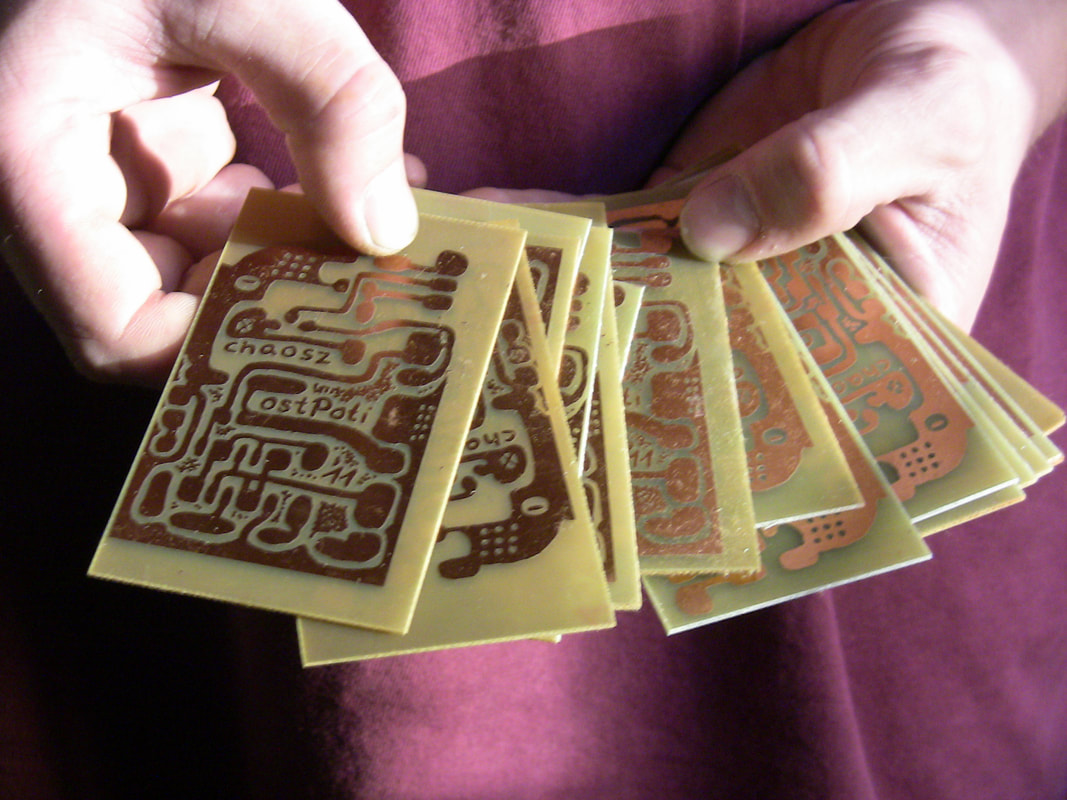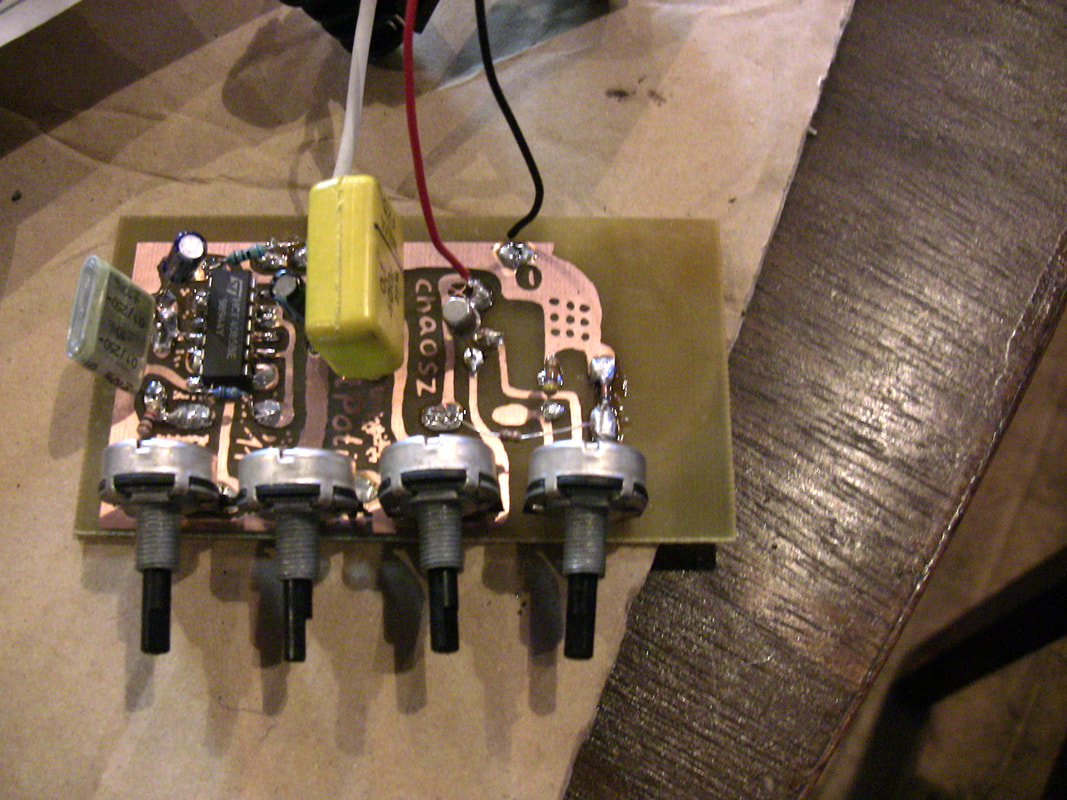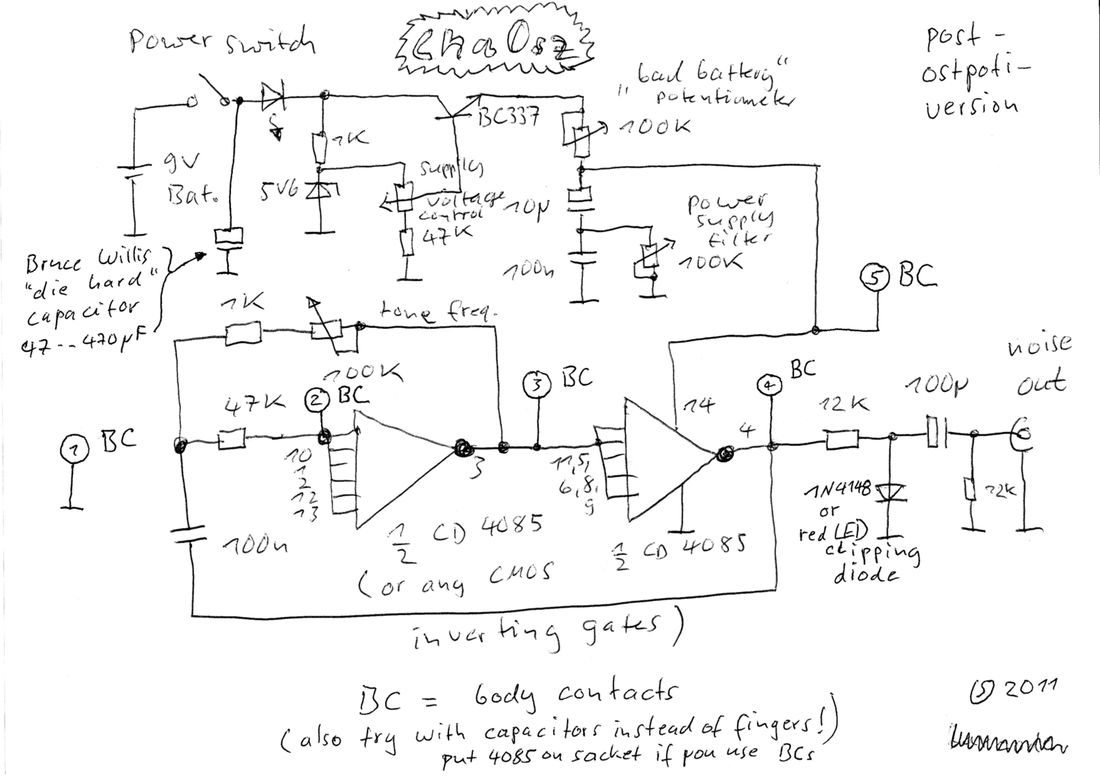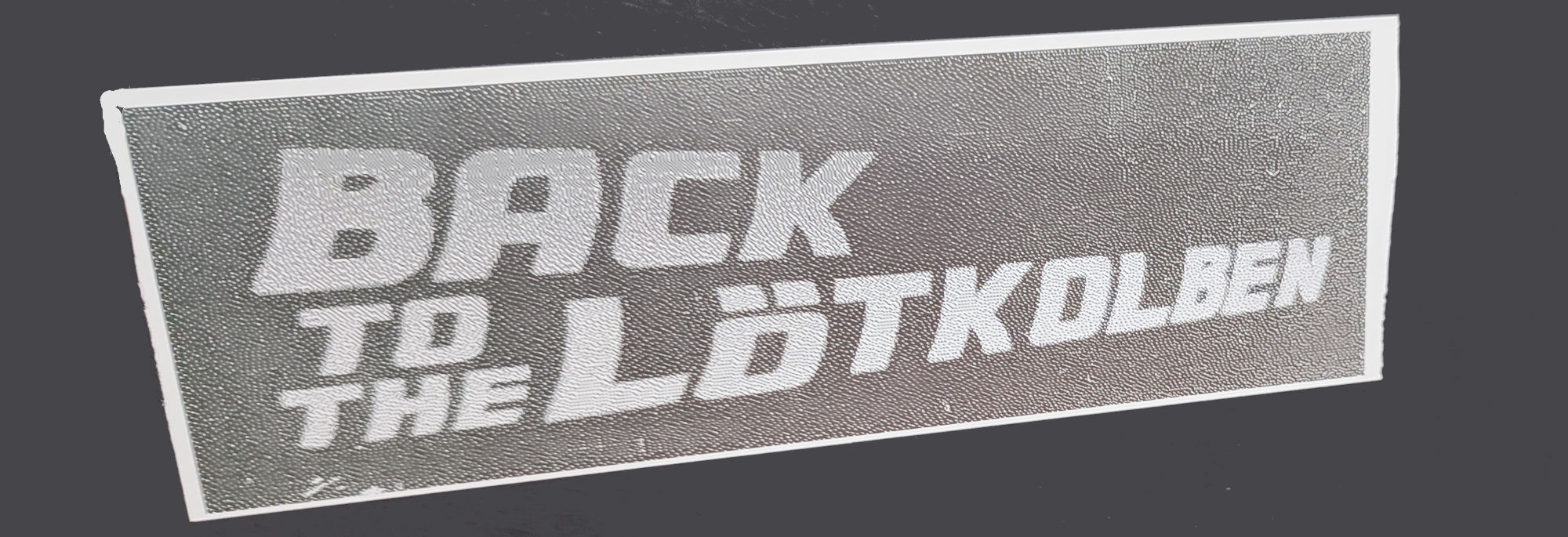
Already Soldered Pt. IX - Chaosz
ChaOsz
Chaos Oszillator designed by Uwe Schüler (Kulturgüterschuppen Dusslingen, Germany) for Circuit Control DIY Soldering Festival at Ostpol (Dresden, Germany) June 2011.
I must confess that I have soldered the ChaOsz about 20 times. With all possible changes and attempts to get even more out of the tool. Ultimately, it must be noted that the "Ostpoti"-version from Dresden 2011 is still the best.
Description of the circuit by the designer
A square wave generator consists of 2 CMOS inverters with variable frequency ("tone frequency") and is connected to an adjustable stabilized voltage of about 1 to 5 volts ("supply voltage control") and a variable internal resistance of 0 to 100 kOhm ("bad battery") and an adjustable filter constant ("power supply filter"). This results in feedbacks on the operating voltage, which lead to unstable and chaotic oscillations.
Background
"Normally, measures are taken to keep electronic circuits stable, including stabilization of the operating voltage, decoupling capacitors, and low-impedance leads to the consumption points," says Uwe Schüler, and if these rules are disregarded, then you can freak around with the most vital sounding synth you can imagine. I got experienced and jammed with the Chaosz for weeks. I soldered some more units with different modificatios. Best is the original version, the Ostpoti by Uwe. Why Chaosz sounds so great is easy to explain: Uwe has spent a lot of effort to produce a maximum unstable and dirty power supply instead of developing a clean standard oscillator. This reverse path strategy masters the studied electronics engineer Uwe Schüler perfectly and tempts the possibilities to the maximum.

I created 90% of the sounds for "2nd Movement" ("Analoge Systeme", CD, base, 2016) with the Chaosz, also the drum sounds. Only the the polyphonic soundscapes come from another analogue synth. The live session with the Chaosz took approximately 2 hours, the editing of the sounds 2 days and the music was finished in 4 hours.

Also published on Electronic Cottage
Already Soldered Uwe Schüler Kulturgüter-Schuppen Chaosz 2011 Electronic Cottage DIY 2023
Popular Post
- Album: DRKMBNT "RMX by Dorninger" - CDR/Digital
- Video / Live: Drkmbnt live at Home Made 2025
- Booking
- New live setup developed at Home Made 2025
- Listen / Radio: DeadBatteryMusic for SchrägeStunde
- Video: drkmbnt live at 24 Hours
- Listen / Radio: Airplay at No Pigeonholes EXP 5-1-25
- What did we do at dBm 2025
- Tiny Techno Orchestra at O-O-O.space
- Already Soldered XV - DroneSlider
- Soldered at the Circuit Control Festival 2024
- Video: Stepper Motor Synth - a jam!
- Workshop: Stepper Motor Synth
- My FX-Eurorack is finished!
- Already Soldered XIV - Moduletta
